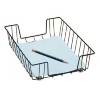I consistently see people on here post something to the effect of "That's not a safe it's a residential security container." or "You don't have a real safe, you have a RSC, real safes cost thousands of dollars".
I have to say this is total BS. A Safe is defined as:
–noun
8. a steel or iron box or repository for money, jewels, papers, etc.
9. any receptacle or structure for the storage or preservation of articles: a meat safe.
or from wikipedia:
A safe (also called strongbox, coffer or kist) is a secure lockable box used for securing valuable objects against theft or damage.
I don't argue that what many of you call safes are are more secure than what you refer to as RSCs, but how can a community (and I'm part of this too) that nit picks the definition of Magazine and Clip totally ignore the actual definition of the word safe? That's like saying an Hi-Point C-9 isn't a firearm, it's PLT (personal lead tosser). It may not be your favorite or even as "good" as a glock or 1911, but it certainly is a firearm.
/rant
I have to say this is total BS. A Safe is defined as:
–noun
8. a steel or iron box or repository for money, jewels, papers, etc.
9. any receptacle or structure for the storage or preservation of articles: a meat safe.
or from wikipedia:
A safe (also called strongbox, coffer or kist) is a secure lockable box used for securing valuable objects against theft or damage.
I don't argue that what many of you call safes are are more secure than what you refer to as RSCs, but how can a community (and I'm part of this too) that nit picks the definition of Magazine and Clip totally ignore the actual definition of the word safe? That's like saying an Hi-Point C-9 isn't a firearm, it's PLT (personal lead tosser). It may not be your favorite or even as "good" as a glock or 1911, but it certainly is a firearm.
/rant




